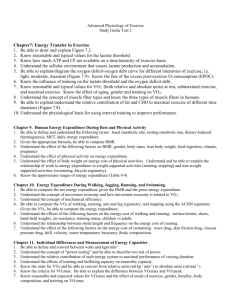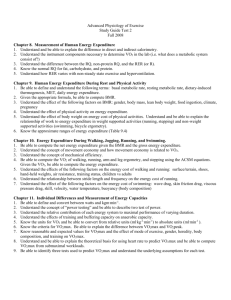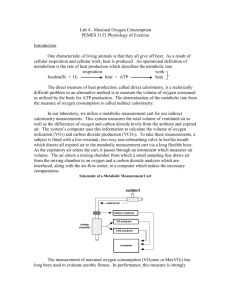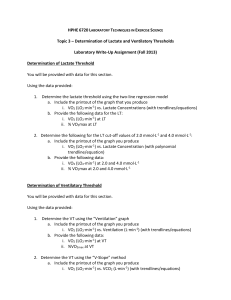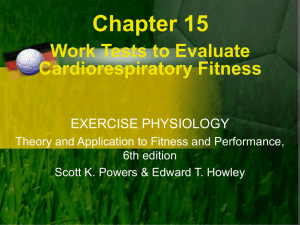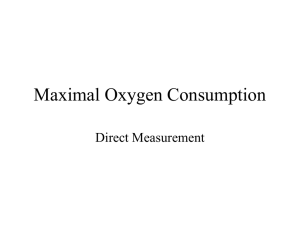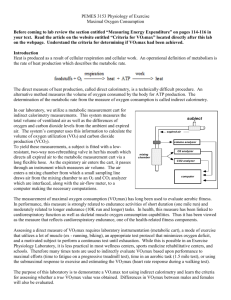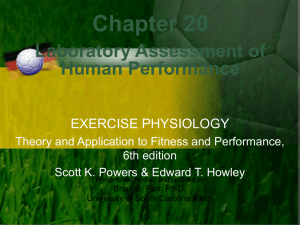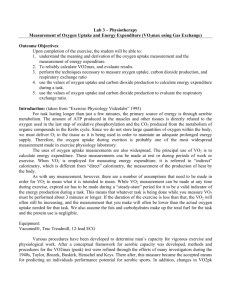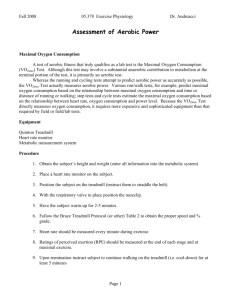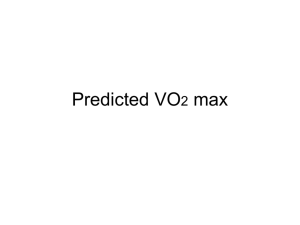Work Tests for Performance
advertisement
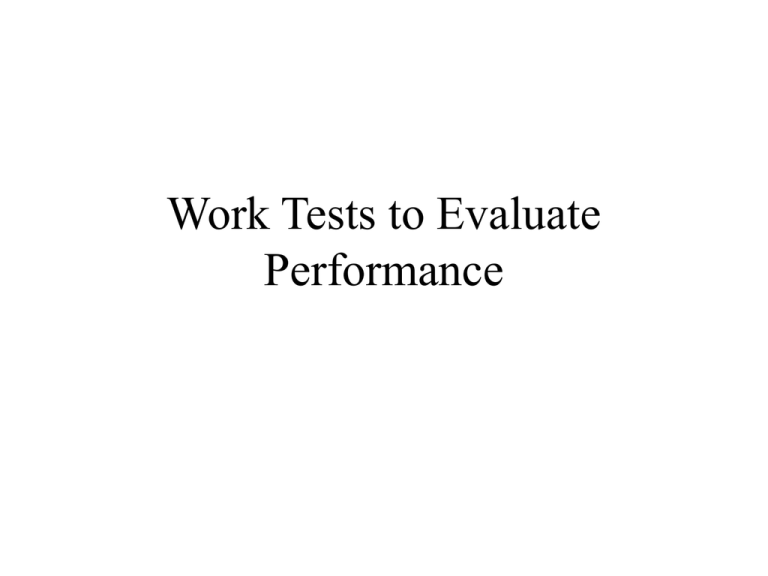
Work Tests to Evaluate Performance Factors That Contribute to Physical Performance What the Athlete Gains From Physiological Testing • Information regarding strengths and weaknesses – Can serve as baseline data to plan training programs • Feedback regarding effectiveness of training program • Understanding about the physiology of exercise Effective Physiological Testing • • • • • • Relevant to the sport Valid and reliable Sport-specific Repeated at regular intervals Carefully controlled procedures Interpreted to the coach and athlete Testing of Maximal Aerobic Power • VO2max testing – Should be specific to athlete’s sport – Should use large muscle groups – Optimal test length: 10-12 minutes • Criteria of VO2max – Respiratory exchange ratio 1.15 – HR in last stage 10 beats•min-1 of HRmax – Plateau in VO2 with increasing work rate Determining VO2max Testing Peak VO2 in Paraplegic Athletes • Paraplegic athletes can be tested using arm exercise – Arm ergometers – Wheelchair ergometers • Highest VO2 measured during arm exercise is not considered VO2max – Called “peak VO2” Laboratory Tests to Predict Endurance Performance • Lactate threshold – Exercise intensity at which blood lactic acid begins to systematically increase – Blood samples taken during incremental exercise Lactate Threshold Ventilatory Threshold • Critical power – Speed at which running speed/time curve reaches plateau Critical Power • Peak running velocity – Highest speed that can be maintained for >5 seconds Predicting Performance From Peak Running Velocity Tests to Determine Running Economy • Measurement of the oxygen cost of running at various speeds – Greater running economy reflected in lower oxygen cost • Higher economy means that less energy is expended to maintain a given speed Running Economy Running Economy and LT Results From Incremental Exercise Test Estimating 10,000m Running Time Using LT and Running Economy • VO2 at LT – 40 ml•kg-1•min-1 • VO2 of 40 ml•kg-1•min-1 – equals running speed of 205 m•min-1 • Estimated 10,000m running time 10,000m 205 m•min-1 = 48.78 min Energy System Contribution to Maximal Exercise Determination of Maximal Anaerobic Power Ultra short-term tests • Tests ATP-PC system • Examples – Margaria power test • Stair running – Jumping power tests – Running power tests • Series of 40-yard dashes – Cycling power tests Short-term tests • Tests anaerobic glycolysis • Examples – Cycling tests • Wingate test – Running tests – Sport-specific tests The Margaria Power Test Series of 40-yard Dashes to Test Anaerobic Power Evaluation of Muscular Strength • Isometric measurement – Static force of muscle using tensiometer • Isotonic measurement – Constant tension – 1 RM lift, handgrip/back-lift dynamometer • Isokinetic measurement – Variable resistance at constant speed • Variable resistance devices – Variable resistance over range of motion Isometric Measurement Using Cable Tensiometer Isotonic Measurement Using Dynamometry Isokinetic Measurement of Strength Using Cybex Dynamometer Printout From Isokinetic Dynamometer
